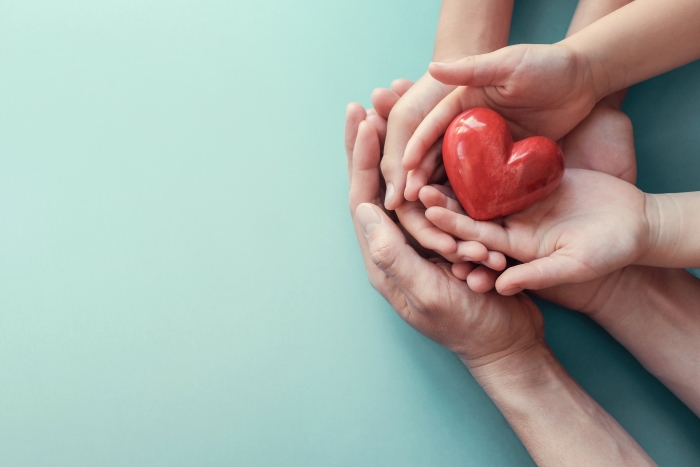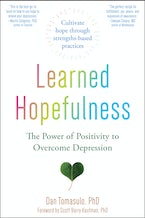By Dan Tomasulo, PhD, author of Learned Hopefulness
The science of hope has never been more relevant and needed than now. New research sheds light on the true nature of hope. As it turns out, it can be either helpful or hurtful—hopeful or hopeless—depending on our beliefs and expectations. Hope is the only positive emotion requiring the activation of negativity or uncertainty. Due to the COVID-19 pandemic, more people have activated negativity and uncertainty than at any point in history.
Until recently, researchers studying hope only seem to have uncovered pieces of the whole. Like the parable of three blind men holding a different part of an elephant and trying to describe it; each seems accurate, yet incomplete. The one holding the tail says it looks like a rope, the one holding the tusk believes it looks like a spear, and the one holding the ear says it looks like a bird. What might hope look like if all of the researchers were right?
Over the past two years in researching the book Learned Hopefulness, I’ve asked this question and found many variations on how hope is viewed.
What emerges when we combine the findings is that the power of hope may be more significant than anyone guessed. Freud himself thought his patients’ “expectations, colored by hope and faith” during the treatment process mostly explained its success or failure.
Focusing on what can be done in the future rather than on what happened in the past is key to understanding how hope can help. Toward this end, here are three findings that emerge from the literature on learned hopefulness:
- Recalibrate goals. Micro-goals should become the new norm. As longer-term goals become more uncertain, there is a considerable risk that our expectation of control in the future will plummet. Micro-goals can recalibrate our focus, allowing us to reengage with our life. Helping your clients think about ways to accomplish goals within brief time limits is essential for lifting a sense of helplessness. Something you can plan, expect you can do, and accomplish in twenty to thirty minutes will awaken your hope circuit. What generates hope is the belief you can control some aspects of your future. Planning a meal, taking a walk around the block, answering three emails, making the bed, or cleaning the closet all have tremendous value in helping you reengage and feel better about your life in those moments. Hope will be generated when we can detect and expect to have control in the future. Micro-goal setting will help us get there.
- Express gratitude, kindness, and compassion. These positive emotions are perhaps the most available now during the pandemic. At 7 p.m. in the different time zones around the world, we come out, clap, cheer, and makes noise to celebrate and show gratitude for those on the front lines. What causes this? This universality of concern about the virus allows the better angels of our nature to express kindness, compassion, and gratitude more readily. Our common humanity binds us together and allows our gratefulness to be expressed to those of service. Finding consistent ways to express gratitude for others through emails, FaceTime, video conferencing, and making noise in the streets at 7 p.m. can be very valuable. Research on hope and resilience shows that as you increase positive emotions, you decrease the negative. Ameliorating suffering happens as a by-product of increasing positive affect. Giving people an opportunity to demonstrate gratitude, kindness, and compassion tips the scale in the right direction.
- Cherish relationships. A survey commissioned by the Royal Society of Arts along with The Food Foundation earlier in April found that once the COVID-19 crisis is over, an overwhelming majority of Britons (85 percent) want some of the personal or social changes from their lockdown experience to continue. Only 9 percent of Britons want to go back to the “normal” life they had. What should we take from this finding? People hope to embrace positive change. In the middle of nearly everything uncertain and negative, they have found enough positivity to start tipping the scales. Much of the positivity will come from more and better connections to people. A stronger sense of their local community was reported by 40 percent of respondents, and a similar amount were more engaged with family and friends. People will expect to make these changes in their life as the crisis lessens. This is hope at work.
There is growing evidence that hope is not only our best protection against a more difficult tomorrow, but also our most available and renewable resource. The essential point to convey to your clients is that hope is never further away than their next thought.
Additional resources
S. F. Maier and M. E. Seligman, “Learned Helplessness at Fifty: Insights from Neuroscience,” Psychological Review 123(4) (2016): 349.
C. R. Snyder, A. B. LaPointe, J. Jeffrey Crowson, and S. Early, “Preferences of High- and Low-Hope People for Self- Referential Input,” Cognition & Emotion 12(6) (1998): 807–823.
J. S. Cheavens, J. E. Heiy, D. B. Feldman, C. Benitez, and K. L. Rand, “Hope, Goals, and Pathways: Further Validating the Hope Scale with Observer Ratings,” The Journal of Positive Psychology 14(4) (2019): 452–462.
B. L. Fredrickson, “Positive Emotions Broaden and Build,” in Advances in Experimental Social Psychology, ed. P. Devine and A. Plant (Burlington: Academic Press, 2013): 1–53. (A review, comprehensive to date, of a fifteen-year research program on the broaden-and-build theory of positive emotions.)
C. Peterson and M. E. Seligman, Character Strengths and Virtues: A Handbook and Classification (Vol. 1) (Oxford University Press, 2004).
C. J. Farran, K. A. Herth, and J. M. Popovich, Hope and Hopelessness: Critical Clinical Constructs (Thousand Oaks, CA: Sage Publications, Inc., 1995). (This book represents twenty-seven collective years of work in the area of hope and hopelessness, with a focus on the positive aspects of hope and its relationship to health.)
C. Feudner, “Hope and the Prospects of Healing at the End of Life,” The Journal of Alternative and Complementary Medicine 11(1) (2005): 23–30. (This paper considers possible interventions and how they might be evaluated, seeking to improve the prospects of healing at the end of life.)
Long, Katelyn NG, et al. “The role of Hope in subsequent health and well-being for older adults: An outcome-wide longitudinal approach.” Global Epidemiology (2020): 100018.
D. J. Tomasulo, “The Virtual Gratitude Visit (VGV): Using Psychodrama and Role-Playing as a Positive Intervention,” in Positive Psychological Intervention Design and Protocols for Multi– Cultural Contexts (New York: Springer, 2019), 405–413.
Dan Tomasulo, PhD, is core faculty at the Spirituality Mind Body Institute (SMBI) at Teachers College, Columbia University; and honored by Sharecare as one of the top ten online influencers on the issue of depression. He holds a PhD in psychology, MFA in writing, and a master of applied positive psychology (MAPP) from the University of Pennsylvania. A highly sought-after international speaker on topics relating to applied positive psychology, he authors the daily column Ask the Therapist, and the Learned Hopefulness blog for www.psychcentral.com. His award-winning memoir, American Snake Pit, was released in 2018.



 2024 Peace Playbook: 3 Tactics to Avoid Clashes with Your Partner
2024 Peace Playbook: 3 Tactics to Avoid Clashes with Your Partner